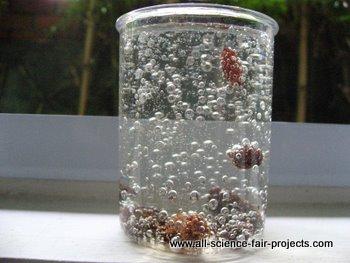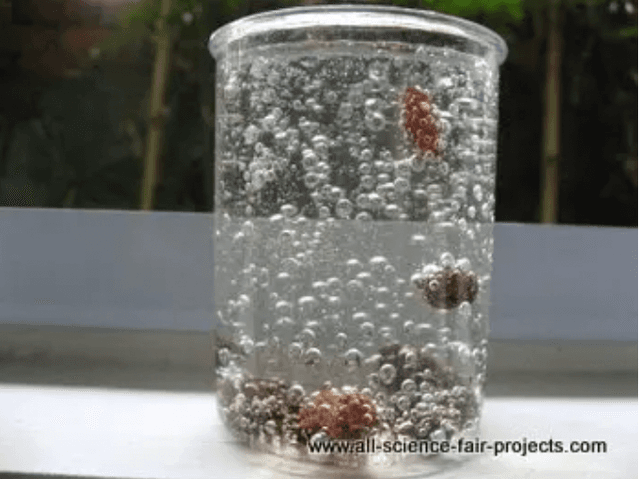Overview
When baking soda is added to a vinegar solution, gas is produced and this causes hundreds of small bubbles to form. This is called a chemical “reaction”.
This reaction between the baking soda (also known as “sodium bicarbonate”) and the vinegar (known as “acetic acid”) produces carbon dioxide gas, water, and the sodium and acetate ions which are “dissolved” in the water.
It is this carbon dioxide gas, that causes the bubbles to form. Bubbles are little “pockets” of air or gas. As these bubbles are filled with gas, they are lighter (scientists use the term “less dense”) than the vinegar solution and will therefore float to the top of the liquid.
An acid is a liquid that is usually sour in taste, and has a pH level of less than 7.
Scientific Terms
Density, Chemical reaction, Sodium bicarbonate, Acid
Conclusion
The bubbles of carbon dioxide gas “stick” to the raisins and help carry the raisins up to the surface. When they reach the surface, the bubbles disappear and the raisins lose the “support” of the bubbles and sink to the bottom of the liquid, as the raisins are denser than the amount of water displaced.
Also consider
Try this experiment with different types of acids and see if it works in the same way as it does when vinegar is used. You could try lime juice, apple cider and other “sour” liquids.
Vinegar and baking soda are often used to unclog sinks and drains, as the reaction that is produced helps to loosen up the clogged dirt. They are also used on their own, to help in household cleaning.
Related video
Hey there! Here are some awesome videos about this science project that we think you'll really like. They're not only super fun, but they'll also help you learn more about the science behind the project. So sit back, relax, and get ready to have some fun!!


